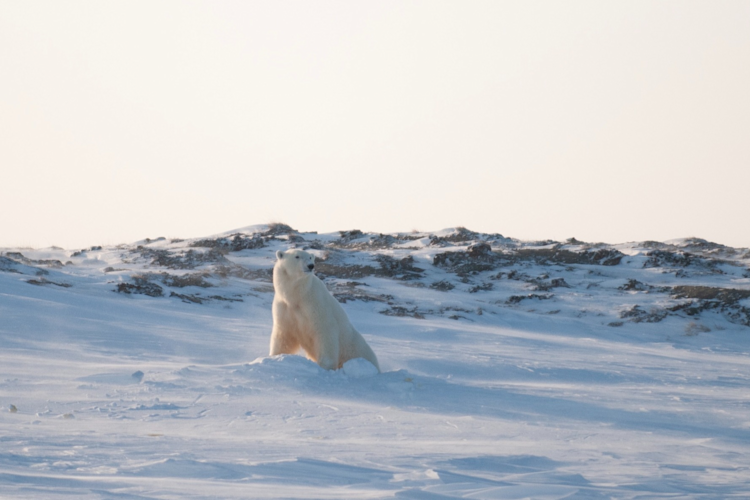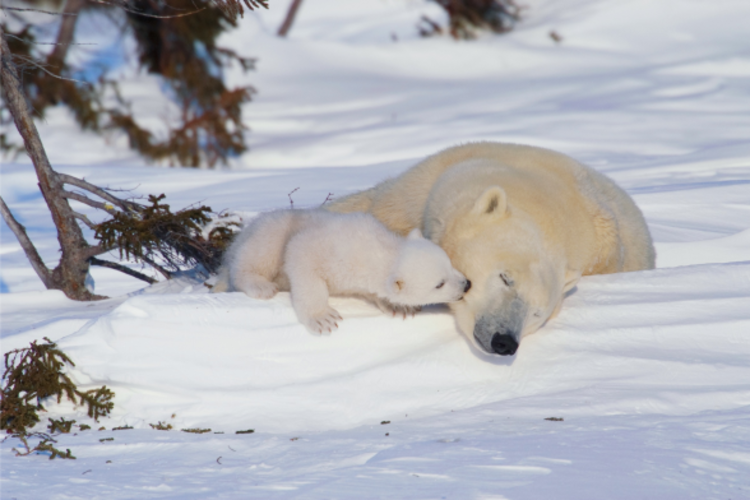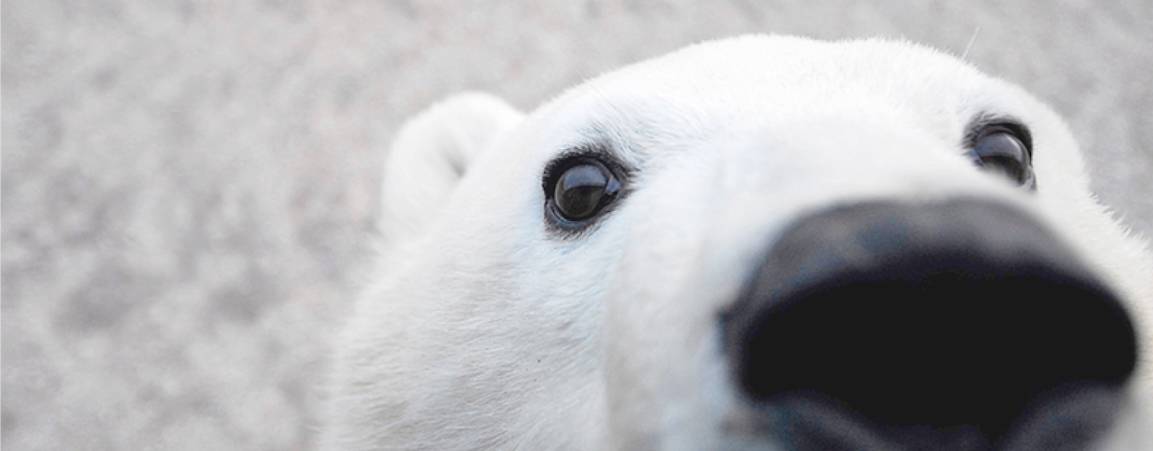If there is one thing we can say with confidence about polar bears, it is that they are creatures of the ice. And with good reason: the species has evolved specifically to take advantage of the frozen surface of the Arctic Ocean and surrounding waters.
In one corner of Greenland, however, a few hundred polar bears have adapted to life on a different kind of ice—the future of which, like that of sea ice, is by no means guaranteed.
Some polar bears hunt from glacier ice
In 2022, a team of researchers led by Kristin Laidre of the University of Washington announced the discovery of an isolated group of polar bears in southeast Greenland that hardly encounters sea ice at all; instead, the bears live deep within long fjords in which sea ice rarely penetrates and hunt from freshwater ice that calves from glaciers.
Unfortunately for those bears—and the rest of us—Greenland’s glaciers are in peril. In 2024, a paper in Nature studied 207 glaciers around the coast of the island and found that 179 had retreated significantly since 1985.
Greenland’s glaciers are retreating
“There is no region of Greenland that hasn’t seen significant retreat over the past few decades, and there’s really no sign that this is going to slow down anytime soon,” explains Chad Greene, a glaciologist who was the lead author of the Nature study.
Greenland’s glaciers, he explains, are being attacked from above and below: warming ocean water melts sea ice that helps anchor glaciers in place, while atmospheric warming creates pools of water that can seep all the way to the bottom of a glacier and create a smooth surface over which it can slide forward more easily.
As they retreat, glaciers calve ice from their face, creating a multitude of icebergs and freshwater ice floes. One might be tempted to think that that might be good news for the polar bears of Southern Greenland, which in 2024 were officially recognized as the 20th subpopulation of polar bears: doesn’t more ice calving from glaciers mean more ice from which the bears can hunt? Alas, things aren't that straightforward.
“Just how long do icebergs last in slightly warmer waters?” Greene asks rhetorically. “Sure, we’re pumping more icebergs into the waters, but if they melt faster, is there any change?”
Besides, such rapid and widespread glacial retreat is the sign of a system that is profoundly out of balance and in danger of collapse. Greenland’s coastal glaciers act like corks that help keep the island’s massive ice sheet in place; Greene and colleagues have calculated that their increased retreat has contributed to the ice sheet losing more than six thousand billion tons in mass since 1985—enough to cover Texas in 30 feet of ice.
2025: the International Year of Glaciers’ Preservation
As a way to highlight the threat to, and importance of maintaining, glaciers worldwide, the United Nations has designated 2025 as the International Year of Glaciers’ Preservation. The year’s efforts kicks off on January 21 with a launch event in Geneva, Switzerland.
Unfortunately, says Laidre, we know so little about the polar bears in southeast Greenland that it is not possible to state unequivocally what the effects of glacial retreat will be on them, other than to note that continued loss of sea ice or freshwater ice will clearly have some impact.
However, given that these bears require glaciers to calve into the fjord, it is reasonable to infer that should warming cause glaciers to retreat so much that they no longer terminate in the ocean, the bears would find themselves struggling to get by in an area where they are already sea ice-deprived.
Rain: a surprising threat
Nor are retreating glaciers the only peril facing Greenland’s polar bears. The 2024 Arctic Report Card from the National Oceanic and Atmospheric Administration (NOAA) noted that summer precipitation across the Arctic was at record high levels last year—a particular problem given that warming means that more and more of that precipitation falls as rain.
Last year, Laidre and wildlife biologist Stephen Atkinson reported that bears in East Greenland and in Kane Basin—between northeastern Canada and northwestern Greenland—had suffered lacerations, hair loss, skin ulcerations, and ice build-up on their fur and primarily on their feet. In the most extreme examples, two bears had ice blocks up to one foot in diameter stuck to their foot pads, which caused deep, bleeding cuts and made it difficult for them to walk.
Laidre and Atkinson propose that one possible explanation is rainfall causing a slushy surface on the ice, which then freezes on the paws of polar bears that walk through it. Another possibility is seawater sweeping through thinning ice at the foot of glaciers, causing a slushy surface.
Reduced emissions are needed
Whether through retreating glaciers, increased rainfall, or disappearing sea ice, Greenland’s polar bears—like those across much of the Arctic—face an uncertain future. The solution in all cases is the same: we need to reduce fossil fuel emissions and bring greenhouse warming under control, so that ice in its many forms continues to be an integral element of the Arctic far into the future – as well as the polar bears it supports.

















